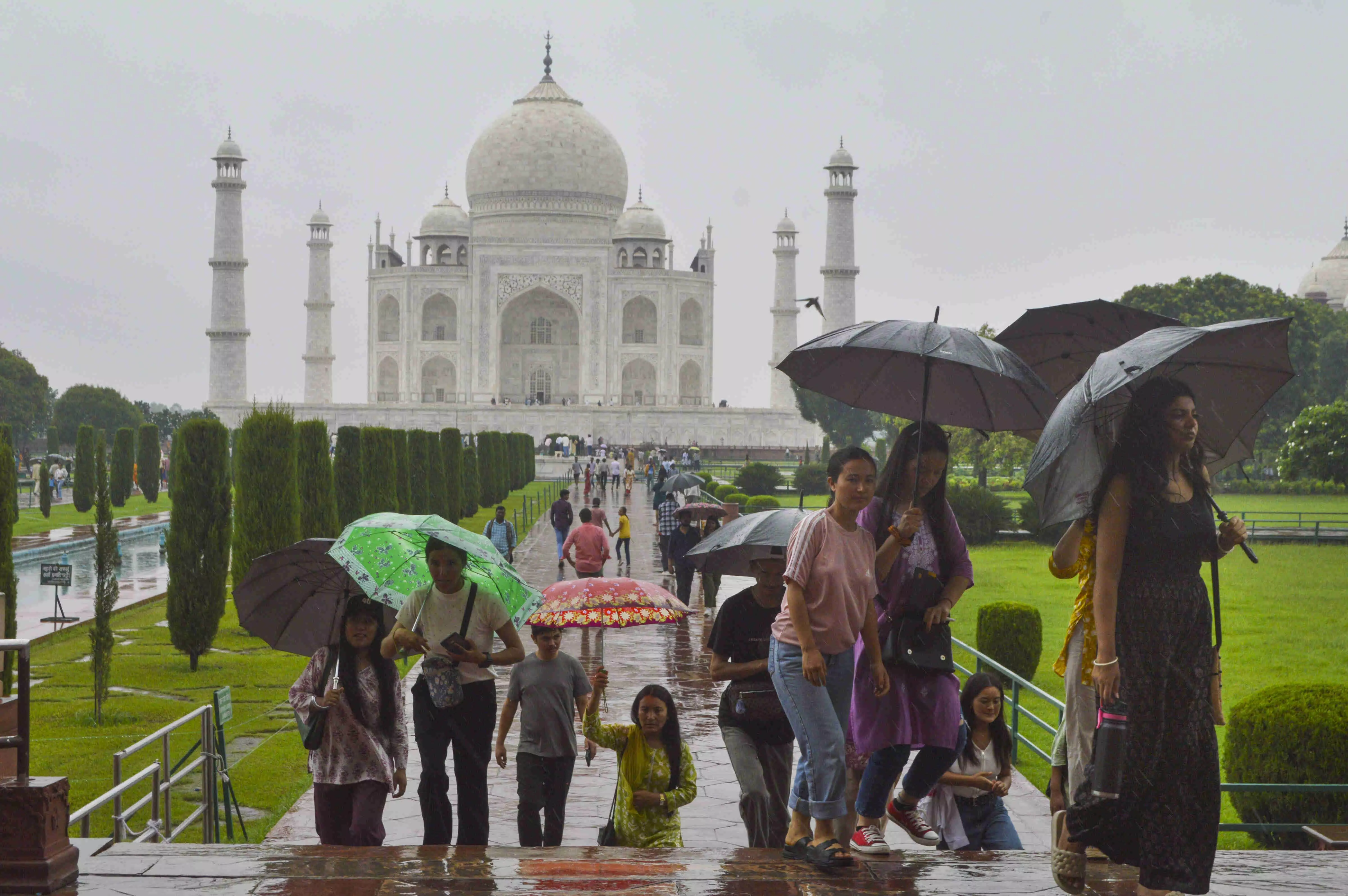Heavy rain causes damage to monuments in Agra city, including the Taj Mahal

Agra: Two days of continuous rainfall have caused significant damage to several historic monuments in Agra, including the Taj Mahal, Agra Fort, and Fatehpur Sikri. The iconic Taj Mahal experienced leakage in the main dome over the tomb of Shah Jahan and Mumtaz due to persistent rain.
Similarly, Agra Fort’s Khas Mahal developed dampness in its wooden sleepers, raising concerns about the preservation of these heritage sites. Notably, both structures feature double domes, which typically offer enhanced protection from weather elements.
A team from the Archaeological Survey of India (ASI), including Superintendent Archaeologist Rajkumar Patel, Senior Conservation Assistant Prince Vajpayee, and engineers, inspected the affected areas. They examined the source of the water leakage in the Taj Mahal’s main dome. The dome, designed with a double structure, typically has an efficient water drainage system. However, the heavy rainfall caused water to seep through, reaching the lower roof and dripping near the tombs. The leakage stopped once the rain subsided later that day.
At Agra Fort, Senior Conservation Assistant Kalander Bind conducted inspections of various structures, including Musamman Burj, Diwan-e-Aam, Moti Masjid, and Khas Mahal, where moisture was detected.
Historical Context of Leaks in the Taj Mahal
This is not the first time the Taj Mahal has experienced leaks. The earliest recorded instance dates back to 1652, when Prince Aurangzeb reported to Emperor Shah Jahan that water was seeping from two places on the northern side of the dome.
He also noted that several arches, galleries, smaller domes, and underground chambers had become damp due to the rain.
Over the years, the monument has undergone numerous repairs, including during British rule.
In 1872, Executive Engineer J.W. Alexander supervised restoration efforts to address water leakage.
Further repairs were carried out in 1924 when a wall collapsed, and in 1928 when the mosque at the Taj was made waterproof.
In 1941, additional work was done to prevent leakage in the main dome, and in 1978, the monument suffered damage during a flood, prompting repairs to both the dome and underground chambers.
“The ASI continues to monitor the condition of these historical structures, ensuring their preservation amid challenges posed by natural elements” Bind said adding; “ Further inspections and repairs are expected to prevent future damage to these culturally significant monuments.”



